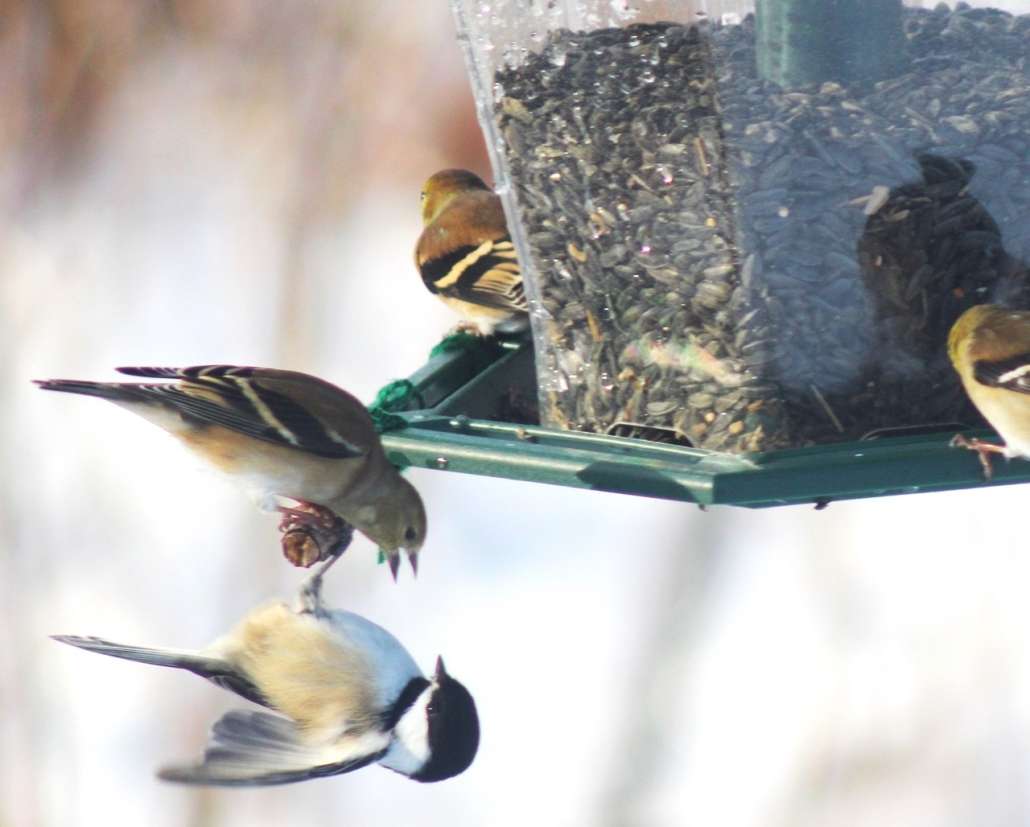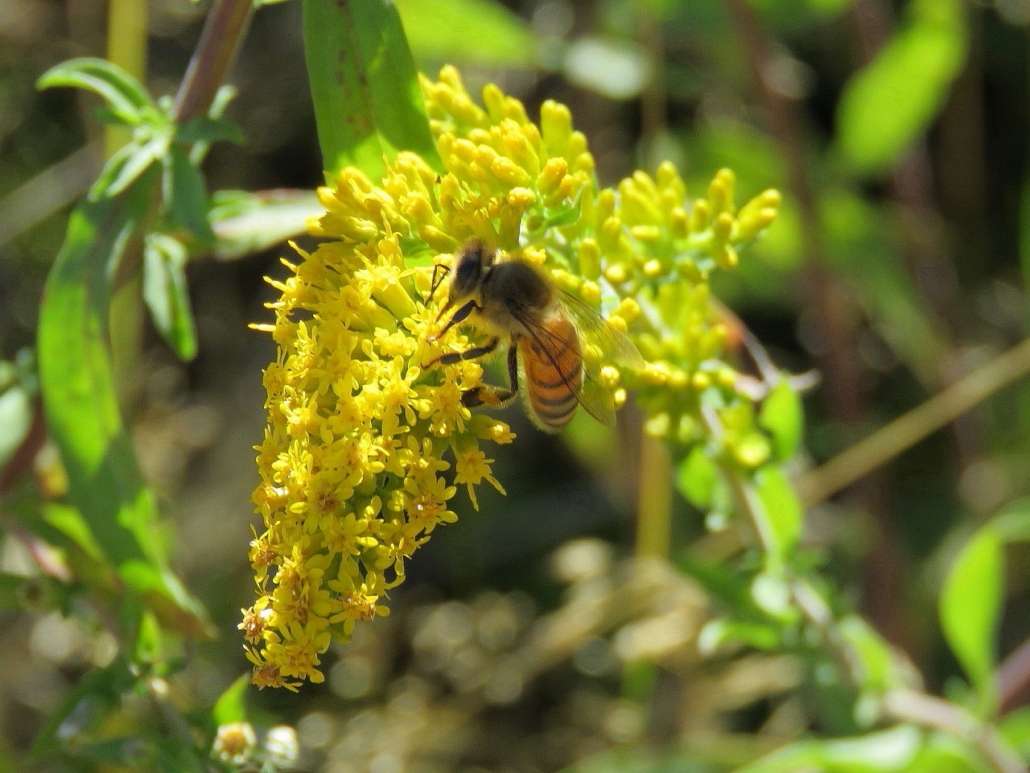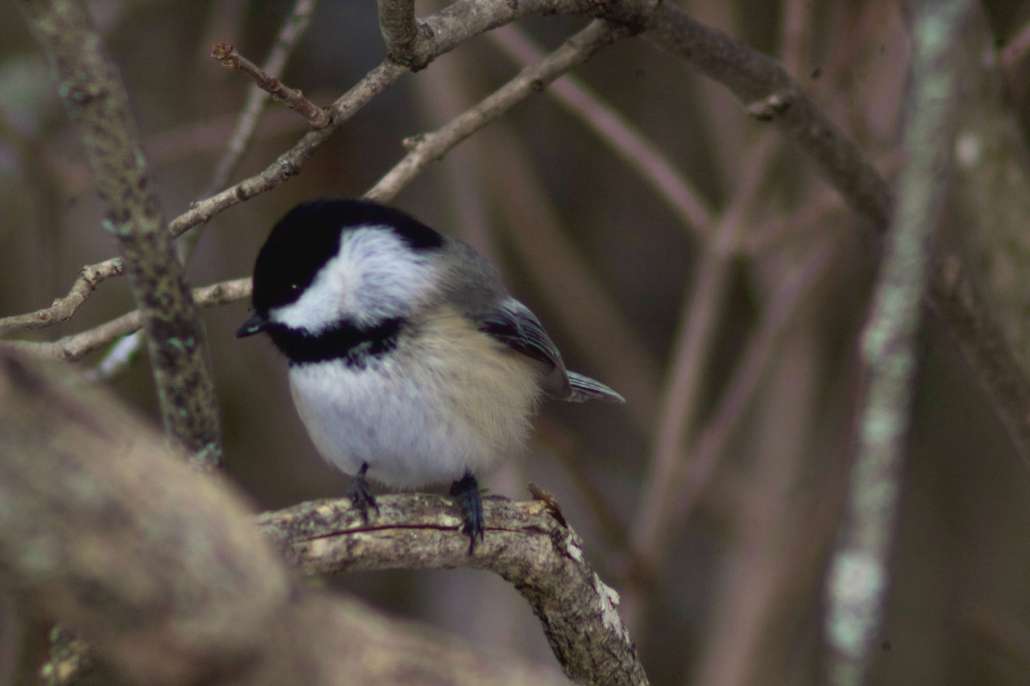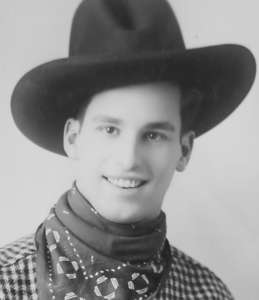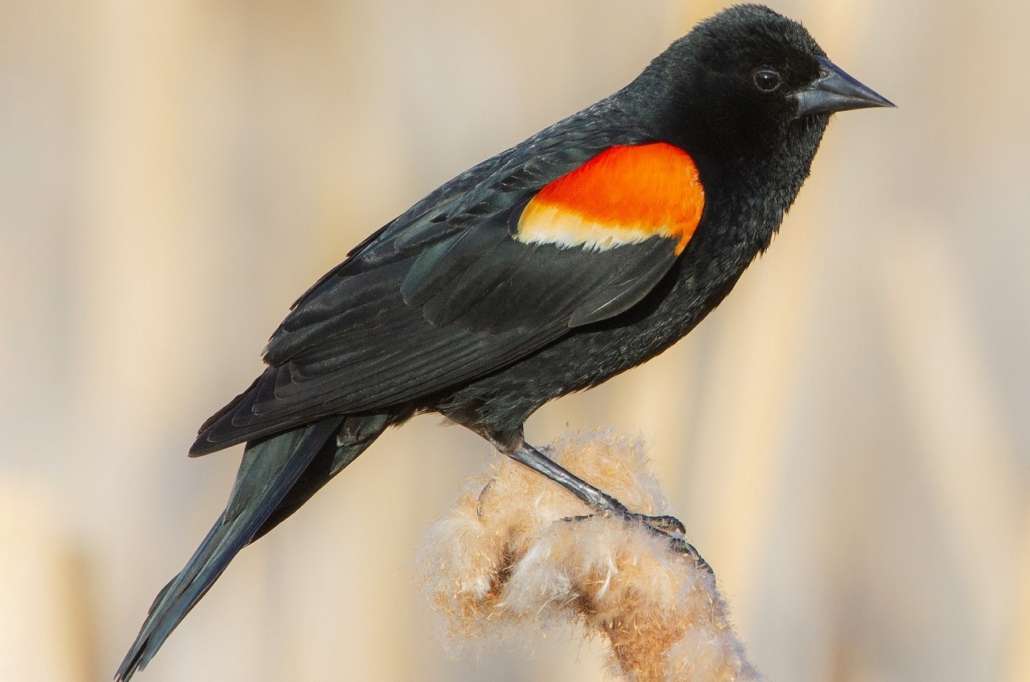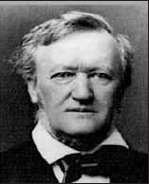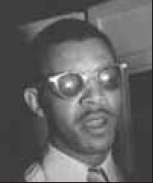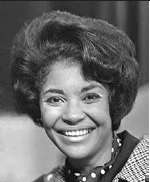FOR YOUR HEALTH – Vitamins and Minerals: Fortifying Against Poor Oral Health
/0 Comments/in For Your Health/by Website Editor Here’s advice you can get your teeth into: Eat plenty of fruits and vegetables for good oral health.
Here’s advice you can get your teeth into: Eat plenty of fruits and vegetables for good oral health.
(NAPSI)—Practicing basic oral hygiene, such as brushing, flossing, and going to regular checkups with a dental professional are some of the most important ways to maintain oral health. However, if these practices are not paired with proper nutrition, oral health can still suffer.
Mindfully incorporating foods that are good for oral health can also contribute to overall wellbeing. Certain vitamins and minerals are particularly beneficial for teeth and gums. Many people take dietary supplements to improve their health or fill gaps in their diet. Supplements can also be a viable alternative for people with dietary restrictions or allergies.
Best vitamins and minerals for oral health and where to eat them
Calcium strengthens enamel, which is the hard outer layer of teeth. It is widely known that cheese, low-sugar yogurt, and other dairy products contain calcium, but many seeds, beans, lentils, and leafy greens are also rich sources.
Phosphorous works with calcium to build strong teeth, as well as bones. Meats like chicken, turkey, and seafood are good sources of phosphorus. Sunflower and pumpkin seeds and whole grains are rich in this mineral, too.
Iron is a mineral used in the production of hemoglobin and having an iron deficiency can lead to harmful consequences for the body. Teeth are no exception. Eggs, beans, meat, poultry, fish, and whole grains all contain iron.
Vitamin C helps to synthesize collagen in the mouth. Eating foods containing vitamin C help strengthen teeth and protect against gingivitis, an early form of gum disease. Citrus fruits, such as oranges, strawberries, and bell peppers, are some of the best sources of vitamin C. When taking vitamin C as a supplement, it is best to avoid liquid or gummies as they can erode enamel.
Vitamin K, and more specifically vitamin K2, helps re-mineralize tooth structure. Leafy greens such as spinach, and cruciferous vegetables such as broccoli, Brussels sprouts, and kale contain vitamins K and C, as well as phosphorous.
Vitamin B, and B12 in particular, helps the body absorb calcium. It is found in many animal proteins and some fortified cereals. For those who do not eat meat or have dietary restrictions, B-complex vitamin supplements are available in place of animal proteins.
Vitamin D, like phosphorous, helps the body absorb calcium. Few foods naturally contain vitamin D, the exceptions being fatty fish, egg yolks, and some species of mushrooms. Spending time in the sunlight and taking vitamin D supplements are proven ways to increase levels of vitamin D in the body.
Eating thoughtfully to support oral health
According to Dr. Greg Theis, Vice President, Dental Services at Delta Dental of Wisconsin, “Dietary choices play an important role in overall oral health, just like brushing or flossing daily. Taking care to eat foods that are rich in essential vitamins and minerals is an important step in keeping teeth strong and healthy.”
Ultimately, eating a vitamin- and mineral-rich diet not only promotes overall wellbeing, but directly affects oral health. Taking supplements to compensate for nutritional gaps is a great way to maintain appropriate levels of crucial vitamins.
REVIEW POTPOURRI – Singer: Hal Lone Pine; TV: Have Gun Will Travel; Movie: Amadeus; Author: Anne Bronte
/0 Comments/in Review Potpourri/by Peter Cates by Peter Cates
by Peter Cates
Harold John Breau
Born in Pea Cove, Maine, Harold John Breau (1916-1977), better known as Hal Lone Pine, was a popular country singer for almost 40 years, especially throughout Maine, New Brunswick and the Canadian prairies, and recorded several songs for RCA Victor during the early 1950s with his wife Betty Cody (1921-2014) . For several years, the couple was a regular on radio and TV in Winnipeg, Manitoba.
After the couple divorced in 1960, Lone Pine formed a partnership with Winnipeg singer Jeannie Ward; the two recorded an LP, Hymns and Heart Songs, in 1964 for the Toronto label Arc. As an example of the sacred music genre, the album is quite good and has a mix of such familiar hymns as Beyond the Sunset and Abide with Me, and some lesser known hymns.
Lone Pine and Betty had two sons who became successful jazz guitarists – Lenny Breau (1941-1984) and younger brother Denny, who is still performing in Maine venues.
Have Gun Will Travel
I have started to watch episodes of Have Gun Will Travel, a popular western TV series that ran from 1957 to 1963. Richard Boone (1917 starred as Paladin, a man who was quick on the draw yet would not use his revolver for any gun-slinging purposes. He would simply have it handy if needed on his various good Samaritan trips.
Paladin is wealthy and lives at a luxury San Francisco hotel. He is also well read – in one episode he quotes the naturalist of ancient Rome, Pliny.
Guest stars have included Hawaii 5-O’s Jack Lord, Charles Bronson of Death Wish fame, and Claude Akins and Leo Gordon (both of whom portrayed cold-blooded villains in movies and television on numerous occasions) in somewhat ominous character roles, a couple of whom change for the better by the end of the episode.
Highly recommended for unpredictable storylines and morally uplifting situations.
Amadeus
The 1985 movie classic Amadeus centered on the relationship between the great composer Mozart and the not so great composer Salieri. One particularly memorable scene, and one which might not be true, has Mozart on his death bed, singing notes for his final masterpiece, the Requiem, as Salieri writes them down.
A 1986 CBS Masterworks cassette of the Requiem featuring a French early music ensemble conducted by Jean-Claude Malgoire (1940-2018) is a good one, but not as good as ones conducted by Davis, Giulini and Karajan with larger orchestras.
Back in 2000, a community chorus in Thomaston gave a very enjoyably spirited performance of the music.
Anne Bronte
The youngest of the three super talented sisters, Anne Bronte (1820-1849) published her 1848 novel, The Tenant of Wildfell Hall, using the pen name Acton Bell because of the condescending attitude then against women writers, as with sister Charlotte’s Currier Bell and Emily’s Ellis Bell.
The novel depicts a woman, Helen Huntingdon, who is fed up with the detestable behavior of her husband and abandons him to live the life of independence she finds well worth living.
As with Charlotte’s Jane Eyre and Emily’s Wuthering Heights, this novel has a searing power and originality that challenges the conventions of society during the mid-1800s.
In a July 22, 1848, preface to the second edition, the author stated:
“My object in writing the following pages was not simply to amuse the Reader, neither was it to gratify my own taste, nor yet to ingratiate myself with the Press and the Public: I wished to tell the truth, for truth always conveys its own moral to those who are able to receive it.”
Later in the novel itself, Bronte describes a countryside morning, “when roused by the flutter and chirp of the sparrows, and the gleeful twitter of the swallows-all intent upon feeding their young, and full of life and joy in their own little frames.”
When Anne was four years old, her father asked her what she most wanted. The little girl replied, “Age and experience!”
FINANCIAL FOCUS: Why see a financial advisor?
/0 Comments/in Financial Focus/by Website Editor Submitted by
Submitted by
Rachael Siegfriedt
Investing for your future is important – but it can be challenging. How can you navigate the complexities of the financial markets and make the right decisions for your situation?
Fortunately, you don’t have to go it alone. A financial advisor can help you in these key areas:
• Developing a personal financial strategy – Many factors go into creating a long-term financial strategy. What is your risk tolerance? When would you like to retire? What sort of retirement lifestyle have you envisioned? What are your other important goals? A financial advisor will ask these and other questions in getting to know you, your family situation and your hopes for the future. By taking this type of holistic approach, a financial advisor can help you create financial and investment strategies appropriate for your needs.
• Avoiding mistakes – A financial advisor can help you avoid costly investment mistakes. One such mistake is attempting to “time” the market. Investors pursue market timing when they try to “buy low” and “sell high.” In theory, of course, this is a great idea – if you could consistently buy investments – stocks, in particular – when their price is down and then sell them when the price has risen significantly, you’d always make some tidy profits.
The main drawback to this technique, though, is that it’s virtually impossible to follow, especially for individual investors. Nobody, not even professional money managers, can really predict with any accuracy when stock prices have reached high or low points. Consequently, those who try to make these guesses could miss out on opportunities.
For example, investors who are determined to buy low might not want to purchase investments when the market is up – but this practice could lead to taking a “time out” from investing just when the market is in the midst of a rally. But a financial advisor can steer clients toward a more disciplined approach, such as buying quality investments and holding them for the long term, regardless of the ups and downs of the market.
• Checking progress toward your goals – If you were to invest without any guidance, you might not be looking at your investments’ performance with the proper perspective. For example, some investors simply compare their portfolio returns against a widely used market index, such as the S&P 500. But this comparison may not be that useful. The S&P 500 only measures the stock prices of the leading publicly traded U.S. companies by market capitalization – but your investment portfolio, if properly diversified, will include investments other than U.S. stocks, such as bonds, government securities, international stocks and more.
Consequently, the performance of your portfolio won’t track that of the S&P 500 or any other single index, either. Your financial advisor can help you employ more meaningful benchmarks, such as whether your portfolio’s progress is on track toward helping you meet your financial goals. Also, a financial advisor will review your portfolio and investment strategy regularly to determine what changes, if any, need to be made, either in response to the markets or to events in your life.
Investing for your future can be exciting and rewarding — and you can feel more confident in your decisions when you have someone helping you along the way.
This article was written by Edward Jones for use by your local Edward Jones Financial Advisor.
Edward Jones, Member SIPC.
Rachael Siegfriedt’s office is located at 82 Maple Ridge Dr., in Monmouth. Her email address is Rachael.Siegfriedt@edwardjones.com.
SCORES & OUTDOORS: The red-winged blackbird a sure sign of spring
/0 Comments/in Scores & Outdoors/by Roland D. Hallee by Roland D. Hallee
by Roland D. Hallee
The old reliable spring indicator appeared in my backyard over the weekend, twice. The robin made its presence known.
However, it was what happened Monday that certified that old folklore. I know spring officially arrived this past Tuesday, March 19. That is a day or two earlier than usual, but it seems everything is early this year.
Going back to what confirmed spring is here was the sighting of the red-winged blackbird. Of all the migratory bird, it is generally the first species to make its way back north.
The red-winged blackbird is a bird found in most of North America and much of Central America. It breeds from Alaska and Newfoundland south to Florida, the Gulf of Mexico, Mexico, and Guatemala, with isolated populations in western El Salvador, northwestern Honduras, and northwestern Costa Rica. It may winter as far north as Pennsylvania and British Columbia, but northern populations are generally migratory, moving south to Mexico and the Southern United States.
Claims have been made that it is the most abundant living land bird in North America, as bird-counting censuses of wintering red-winged blackbirds sometimes show that loose flocks can number in excess of a million birds per flock and the full number of breeding pairs across North and Central America may exceed 250 million in peak years.
Regarding its numbers, the International Union for Conservation of Nature (IUCN) lists the red-winged blackbird of least concern.
The red-winged blackbird is sexually dimorphic; the male is all black with a red shoulder and yellow wing bar, while the female is a nondescript dark brown. Seeds and insects make up the bulk of the red-winged blackbird’s diet.
The red-winged blackbird is a sister species to the red-shouldered blackbird that is endemic to Cuba. These two species are together sister to the tricolored blackbird that is found on the Pacific coast region of the California and upper Baja California in Mexico.
Depending on the authority, between 20 and 24 subspecies are recognized which are mostly quite similar in appearance.
The red-winged blackbird breeds in marshes, brushy swamps, hayfields; forages also in cultivated land and along edges of water. Breeds most commonly in freshwater marsh, but also in wooded or brushy swamps, rank weedy fields, hayfields, upper edges of salt marsh. Often forages in other open habitats, such as fields and mudflats; outside the breeding season, flocks gather in farm fields, pastures, and feedlots.
One of the most abundant birds across North America, and one of the most boldly colored, the red-winged blackbird is a familiar sight atop cattails, along soggy roadsides, and on telephone wires. Glossy-black males have scarlet-and-yellow shoulder patches they can puff up or hide depending on how confident they feel. Females are a subdued, streaky brown, almost like a large, dark sparrow. Their early and tumbling song are happy indications of the return of spring.
Red-winged blackbirds may come to your yard for mixed grains and seeds, particularly during migration. Spread grain or seed on the ground as well, since this is where Red-winged Blackbirds prefer to feed.
The red-winged blackbird is a highly polygynous species, meaning males have many female mates – up to 15 in some cases. In some populations 90 percent of territorial males have more than one female nesting on their territories. But all is not as it seems: one-quarter to one-half of nestlings turn out to have been sired by someone other than the territorial male.
Male red-winged blackbirds fiercely defend their territories during the breeding season, spending more than a quarter of daylight hours in territory defense. He chases other males out of the territory and attacks nest predators, sometimes going after much larger animals, including horses and people.
Red-winged blackbirds roost in flocks in all months of the year. In summer small numbers roost in the wetlands where the birds breed. Winter flocks can be congregations of several million birds, including other blackbird species and starlings. Each morning the roosts spread out, traveling as far as 50 miles to feed, then re-forming at night.
The oldest recorded red-winged blackbird was 15 years, 9 months old. It was banded in New Jersey in 1967, and found alive, but injured in Michigan in 1983. It was able to be released after recovering from its injuries.
Roland’s trivia question of the week:
What Boston Celtics player holds the distinction for hitting the most 3-point baskets in one season?
Give Us Your Best Shot! for Thursday, March 14, 2024
/0 Comments/in Give Us Your Best Shot!/by Website EditorTo submit a photo for this section, please visit our contact page or email us at townline@townline.org!
FOR YOUR HEALTH: Shining a Spotlight on Kidney Health: Get to Know Your Kidneys
/0 Comments/in For Your Health/by Website Editor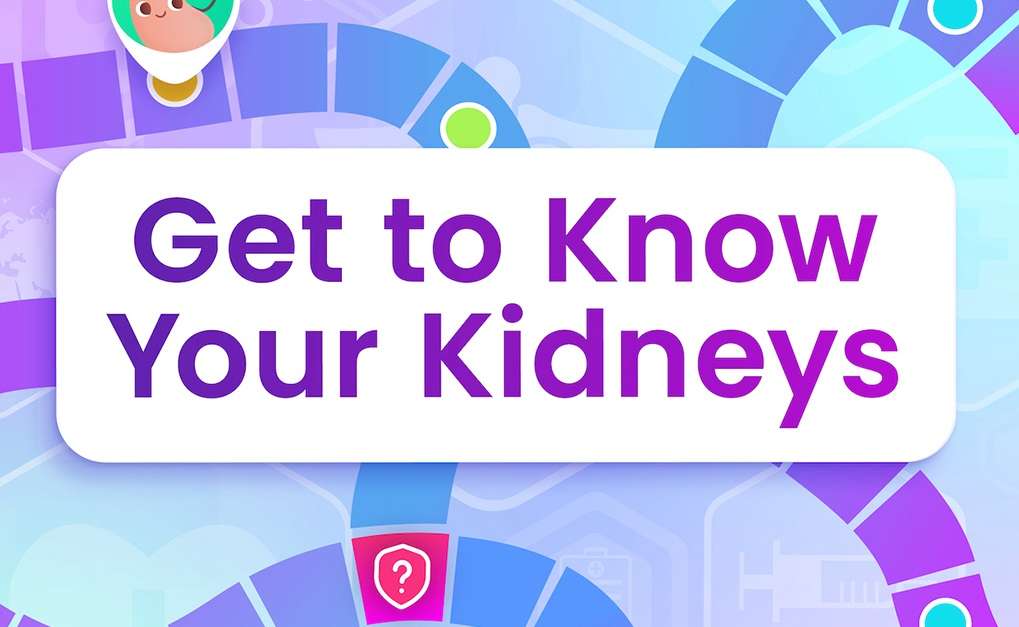 The more you know about your kidneys, the better they can keep you healthy.
The more you know about your kidneys, the better they can keep you healthy.
(NAPSI)—What better time to get to know your kidneys than National Kidney Month?
Your kidneys play a vital role in keeping your body functioning, which is why healthy kidneys are important to your overall health.
Your kidneys are two bean-shaped organs located just below your rib cage, one on each side of your spine. Working around the clock, your kidneys filter approximately 150 quarts of blood each day, removing waste and extra fluid from your body.
People can get kidney disease at any age, even children. Kidney disease means your kidneys are damaged and can’t filter blood the way they should.
Taking steps to protect your kidneys can help keep your body healthy and may prevent or slow the progression of kidney disease. It’s never too early to take steps to keep your kidneys healthy. Even small steps can make a big difference.
Talk with a health care professional about kidney disease risk factors and develop a plan together to address those risks. You may be at a higher risk for kidney disease if you have diabetes, high blood pressure, heart disease, a history of acute kidney injury or a family history of kidney disease.
Help maintain your kidneys by following healthy habits:
• Manage diabetes, high blood pressure and heart disease by working with a health care professional.
• Be physically active for at least 30 minutes each day.
• Aim for 7 to 8 hours of sleep each night.
• Quit smoking and limit your alcohol intake.
• Try to eat healthy foods and stay hydrated.
• Manage stress.
It takes time to build healthy habits, but the benefits to your health are worth it. Start small and reach out for support when needed.
Stay informed about your kidney health! Early on, kidney disease often has no symptoms. In fact, as many as 90% of people who have kidney disease don’t know they have it. If you are over 60 or have risk factors for kidney disease at any age, ask a health care professional about getting tested. Testing involves a blood test and a urine test. Contact your health care professional’s office or a community health center near you to schedule your kidney tests. The earlier you find out you have kidney disease, the sooner you can take steps to protect your kidneys from further damage.
As you work to keep your kidneys healthy, the National Institute of Diabetes and Digestive and Kidney Diseases (NIDDK), part of the National Institutes of Health, is supporting research to prevent, monitor and treat kidney disease. NIDDK’s Kidney Precision Medicine Project (KPMP) is one example of research aimed at discovering the biology of kidney health and disease. KPMP works to improve future kidney care tailored to the individual patient. Another NIDDK-supported study, the Chronic Kidney Disease in Children Study (CKiD), looks at how kidney disease affects the development of heart disease, brain function and growth in children, and works to identify risk factors for kidney disease progression. These and many other NIDDK research studies are offering promising insights into improving and maintaining kidney health.
“While NIDDK invests in innovative research to improve kidney disease prevention and treatment, we encourage people to learn about the critical functions our kidneys perform every day to keep us alive,” said NIDDK Director Dr. Griffin P. Rodgers. “Taking simple steps now to protect and preserve kidney health can be lifesaving and make a tremendous difference in long-term health and well-being.”
To learn more about kidney health this National Kidney Month, visit the NIDDK website at www.niddk.nih.gov and follow NIDDK on social media @NIDDKgov.
REVIEW POTPOURRI – Historian: Joyce Butler; Composer: Richard Wagner
/0 Comments/in Review Potpourri/by Peter Cates by Peter Cates
by Peter Cates
Joyce Butler
In an 1995 textbook anthology, Maine, the Pine Tree State from Prehistory to the Present, the late Kennebunk historian Joyce Butler provided an essay on family and community life from 1783 to 1861.
A few items:
Saco was originally Pepperelborough, “a rough lumbering town.”
The missionary Paul Coffin considered Union “a place for young men to make themselves.”
A tradesman in Falmouth bought 7,800 acres between the Saco and Ossipee Rivers in 1787 for under a thousand dollars, a purchase that later became the town of Hiram.
Dancing, Blind Man’s Bluff, and backgammon were some of the social activities enjoyed by the wealthy classes in Portland.
A 15 year old teenager from Denmark, Rufus Porter, walked the 106 mile round trip to Portland to seek his fortune.
Richard Wagner
Parsifal was Richard Wagner’s last opera and given its world premiere in 1882 at Bayreuth, the opera house in Germany that was built to the composer’s specifications and to this day is a mecca for opera lovers.
It has a plot centered on a mythical King Arthurish knight, Parsifal, and his search for the holy grail (During the 1970s, Monty Python did its own version of this holy grail search, resulting in a very hilarious film.) and runs five hours, quite a lengthy evening.
The opera has provoked extreme reactions in its history – composers Gustav Mahler and Claude Debussy found it the greatest experience of their life while Igor Stravinsky and novelist Mark Twain detested it.
I myself enjoy the music in this opera and have not bothered to follow the story line, being of the belief that appreciation of the music should come before trying to figure out the plot and its characters. When the music is firmly in the listener’s mind and heart, then further study is fruitful.
During the last month, I listened to three different recordings of Parsifal, each of them of exceptional merit. The first one is from 1950, and features Vittorio Gui conducting an Italian language production at La Scala in Milan with tenor Africo Baldelli in the title role and the legendary soprano Maria Callas as the significant woman Kundry.
The second set, from 1973, presents Sir Georg Solti leading the Vienna Philharmonic with Rene Kollo as Parsifal and Christa Ludwig as Kundry. #3 from 1981 has Herbert von Karajan directing the Berlin Philharmonic, Peter Hofmann’s Parsifal and Dunja Vejzovic’s Kundry.
Good news for thrifty listeners- all three recordings can be heard on YouTube.
Al Hibbler
Jazz singer Al Hibbler (1915-2001) recorded a 1954 ten inch lp of six selections for Columbia Records House Party series with Duke Ellington and his orchestra and gave performances to be savored slowly; they included two Great American Songbook classics, Don’t Get Around Much Anymore and The World Is Waiting for the Sunrise, which was frequently heard during the dark days of World War II.
Nancy Wilson
Nancy Wilson (1937-2018) appeared on a memorable 1970 episode of Hawaii Five-O, Trouble in Mind, as a nightclub singer with addiction problems. Even in that role, she conveyed wonderful stage presence singing with a small combo.
A 1991 Columbia cassette, With My Lover Beside Me, is an album of songs by lyricist Johnny Mercer and singer/composer Barry Manilow. As with her numerous other albums, this one comes highly recommended.
SMALL SPACE GARDENING: Selecting the right potting mix for your plantings
/0 Comments/in Small Space Gardening/by Melinda Myers
The right potting mix will help ornamental and edible plants thrive. (photo courtesy of MelindaMyers.com)
 by Melinda Myers
by Melinda Myers
As gardeners, it seems we are all looking for an ideal potting mix for our houseplants and containers. As with any gardening endeavor, a lot depends on what is available, the plants you are growing, and the type of maintenance you provide.
That said, there are some things you can do to increase your success and reduce ongoing maintenance. It all starts by reviewing the label on the bag you plan to purchase. You’ll find a variety of bags labeled as planting mix, potting mix, container mix, and more. Check the label to see what the bag contains and recommendations for its use.
These mixes usually contain inorganic and organic materials and may also include sand and mineral soil. They may or may not be sterilized to kill weed seeds and pests. If it doesn’t say sterilized, it probably is not, and you should consider another product instead.
Many potting mixes are labeled as “soilless.” They consist of peat moss, sphagnum moss, and compost for moisture retention and vermiculite or perlite for drainage but do not contain mineral soils such as sand or clay. They are lightweight and blended to hold moisture while draining well.
Some potting mixes are modified to accommodate the needs of certain plants. Orchid mixes often contain more bark for better aeration while cacti and succulent mixes have more sand or perlite for better drainage. African Violet potting mix contains more organic matter to create a moist, rich growing medium.
Organic potting mixes are also available. Many gardeners prefer to know the ingredients are free of pesticides and other contaminants. Check for the word organic and OMRI on the label if you want an organic product.
Once again, check the label on the bag for more details on the potting mix. Some potting mixes contain a “starter charge” of fertilizer. This minimal amount of fertilizer is usually gone after two or three waterings. Some include additional fertilizer that provides small amounts of nutrients over a longer period. The label may say controlled-release, time-release, or slow-release fertilizer, meaning it provides your plants with nutrients for a certain amount of time.
Moisture retaining products are supposed to hold water near plant roots and reduce the frequency of watering. Research has not shown them to be effective. Some gardeners feel they are effective while others end up with root rot when using these.
Consider adding an organic product, like Wild Valley Farms wool pellets (wildvalleyfarms.com) to potting mixes that do not contain moisture-retaining products. It is sustainable, made from wool waste, University-tested, and has been shown to reduce watering by up to twenty percent, while also increasing air space and adding organic matter.
Select bags of potting mix that are light, fluffy, and moist. Avoid bags that are waterlogged and heavy. The mix can break down and become compacted and some of the slow-release fertilizer may be pre-released and damage young seedlings when saturated with water.
Spend a bit of time searching for the potting mix that best matches the plants you are growing and your watering regime. The time spent selecting your perfect potting mix will pay off with greater growing success.
Melinda Myers has written more than 20 gardening books, including the recently released Midwest Gardener’s Handbook, 2nd Edition and Small Space Gardening. She hosts The Great Courses “How to Grow Anything” instant video and DVD series and the nationally syndicated Melinda’s Garden Moment radio program. Myers is a columnist and contributing editor for Birds & Blooms magazine and was commissioned by Wild Valley Farms for her expertise to write this article. Myers’ website is www.MelindaMyers.com.
SCORES & OUTDOORS: What to do about the spotted lanternfly once it arrives in Maine
/0 Comments/in Scores & Outdoors/by Roland D. Hallee by Roland D. Hallee
by Roland D. Hallee
Just the other day, my wife showed me a Facebook post warning us about the Spotted Lanternfly, and a clear message to kill it upon sight. So, my curiousity being what it is, I had to find out, first, what it is, and second, how to eliminate it if that is what we’re supposed to do.
The Spotted Lanternfly is an invasive species native to Asia. In 2014 it was found in Pennsylvania, and has since spread to multiple counties and states which are now quarantined.
Kill it! Squash it, smash it…just get rid of it. In the fall, these bugs will lay egg masses with 30-50 eggs each. These are called bad bugs for a reason, don’t let them take over your county next.
The spotted lanternfly causes serious damage including oozing sap, wilting, leaf curling and dieback in trees, vines, crops and many other types of plants. In addition to plant damage, when spotted lanternflies feed, they excrete a sugary substance, called honeydew, that encourages the growth of black sooty mold. This mold is harmless to people however it causes damage to plants. In counties infested and quarantined for spotted lanternfly, residents report hundreds of these bad bugs that affect their quality of life and ability to enjoy the outdoors during the spring and summer months. Spotted lanternflies will cover trees, swarm in the air, and their honeydew can coat decks and play equipment.
In addition to damaging trees and affecting quality of life, the spotted lanternfly is a huge threat to agriculture industry. The economic impact could total in the hundreds of millions of dollars and hundreds of thousands of jobs for those in the grapes, apple, hops, and hardwood industries.
The spotted lanternfly adult is approximately 1 inch long and 1/2 inch wide at rest. The forewing is grey with black spots and the wings tips are reticulated black blocks outlined in grey. The hind wings have contrasting patches of red and black with a white band. The legs and head are black; the abdomen is yellow with broad black bands. Immature stages are black with white spots, and develop red patches as they grow.
While there is no active infestation of the spotted lanternfly in Maine, spotted lanternfly eggs were discovered in the Pine Tree State in 2020. Spotted lanternfly has also been seen in neighboring New Hampshire.
If you think you see any of the life stages of the spotted lanternfly, please report it to Bugwatch@maine.gov. Photos and/or specimens are required for identification and confirmation.
The Spotted Lanternfly, Lycorma delicatula, is a large planthopper native to China. It was first discovered in the United States in 2014 in southeastern Pennsylvania. SLF feeds on a wide range of host plants, including apple, grape, hops and many ornamental trees. Efforts to eradicate and quarantine spotted lanternfly have slowed its spread, but it has succesfully been able to establish in many additional states.
The Spotted Lanternfly prefers to feed on the invasive tree, Ailanthus altissima or tree-of-heaven. The geographical distribution of this tree in Maine is not fully known. Because of the strong association between spotted lanternfly and tree-of-heaven, the state is asking people to report sightings of tree-of-heaven also. Tree-of-heaven looks much like sumac.
Roland’s trivia question of the week:
Have any Boston Red Sox pitchers’ numbers been retired?
Interesting links
Here are some interesting links for you! Enjoy your stay :)Site Map
- Issue for April 3, 2025
- Issue for March 27, 2025
- Issue for March 20, 2025
- Issue for March 13, 2025
- Issue for March 6, 2025
- Issue for February 27, 2025
- Issue for February 20, 2025
- Issue for February 13, 2025
- Issue for February 6, 2025
- Issue for January 30, 2025
- Issue for January 23, 2025
- Issue for January 16, 2025
- Issue for January 9, 2025
- Issue for January 2, 2025
- Issue for December 19, 2024
- Issue for December 12, 2024
- Issue for December 5, 2024
- Issue for November 28, 2024
- Issue for November 21, 2024
- Issue for November 14, 2024
- Issue for November 7, 2024
- Issue for October 31, 2024
- Issue for October 24, 2024
- Issue for October 17, 2024
- Issue for October 10, 2024
- Issue for October 3, 2024
- Sections
- Our Town’s Services
- Classifieds
- About Us
- Original Columnists
- Community Commentary
- The Best View
- Eric’s Tech Talk
- The Frugal Mainer
- Garden Works
- Give Us Your Best Shot!
- Growing Your Business
- INside the OUTside
- I’m Just Curious
- Maine Memories
- Mary Grow’s community reporting
- Messing About in the Maine Woods
- The Money Minute
- Pages in Time
- Review Potpourri
- Scores & Outdoors
- Small Space Gardening
- Student Writers’ Program
- Solon & Beyond
- Tim’s Tunes
- Veterans Corner
- Donate


